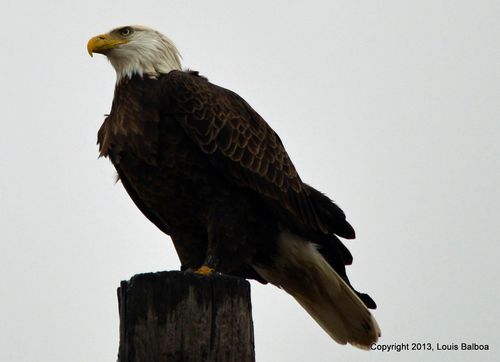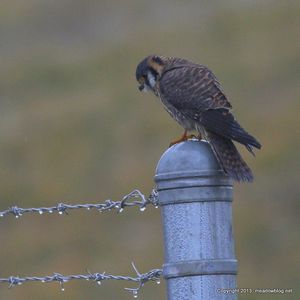
Remember the Bald Eagle that Mary Kostus and a few others saw on Disposal Road earlier this month?
Louis Balboa managed to get a great shot of the bird perched on a pole, and as far as we can tell, the black-on-black leg bands read 9 on top and V on the bottom. We submitted the info to the USGS Bird Banding Lab, and they have reported back.
The bird was banded as an eaglet on May 13, 2008, in Burlington, Conn., by the Connecticut DEP's Wildlife Division.
Jenny Dickson, Supervising Wildlife Biologist for the Connecticut DEP, writes:
"We always like to hear how our birds are doing once they grow up. 9/V was actually banded by my colleague Julie Victoria, a wildlife biologist who retired in 2011.
"It was banded on May 13, 2008, in Old Lyme, so it clearly likes a coastal view. He was one of two chicks that year (both males). This nest is one of our oldest and most successful nests and is still active (hopefully that continues in 2013!)" (Thanks, Jenny!)
USGS Bird Banding website is here.
Certificate from the USGS follows. (And a tip of the hat to Julia Fuhr, who commented on the blog that the black bands signified a Connecticut bird.)
Continue reading →
 The folks at DeKorte Park's Meadowlands Environment Center have a nifty array of late winter and spring programs on tap — everything from astronomy talks to bee demonstrations and up-close looks at hedgehogs and other live animals.
The folks at DeKorte Park's Meadowlands Environment Center have a nifty array of late winter and spring programs on tap — everything from astronomy talks to bee demonstrations and up-close looks at hedgehogs and other live animals. 


